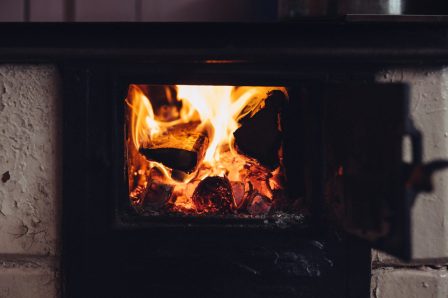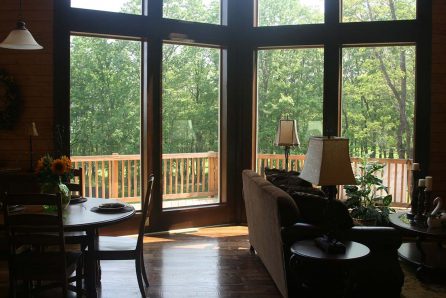It’s no surprise that heating takes up a large part of the energy used in a typical U.S. home. In log cabins, which are often a second home or vacation spot for many people, it’s important to think about energy efficiency. No one wants to spend as much money heating their getaway cabin as they do their primary residence! This is why many cabin owners turn to natural heat sources. Keep reading to learn more about some popular alternative heat sources!
Alternative Heat Sources for Your Cabin
Pellet Stoves
Even though they were used to heat cabins hundreds of years ago, wood stoves are still around today! A pellet stove is very similar to a wood stove, except it is cleaner-burning and achieves higher energy efficiency. The “pellets” used in this stove are usually made of a wood-based substance and include organic materials. These stoves come in a variety of different sizes, and larger ones can produce enough heat to warm an entire home! However, pellet stoves require some maintenance because they need to be filled and cleaned regularly.
Heating Oil
Many homeowners use natural gas for a central heating system. However, cabins in rural areas may have limited access to natural gas. In this case, oil-fired boilers and furnaces are a great (and less expensive) alternative. Depending on the type of oil used, these heating systems can lower both pollution levels and overall heating cost!
Geothermal Heating
Because it uses Earth’s natural heat, geothermal heating is one of the most efficient alternative heat sources available. With geothermal heating, a ground source or pump obtains heat from below the earth’s surface. While it is relatively pricey, a geothermal heating system conserves so much energy that it will pay for itself in less than 10 years.
 Solar Heating
Solar Heating
With this type of heating, solar heat passes through large windows or skylights and warms a home. To retain the heat, there must be an absorber, which is simply a floor covering that will absorb and retain heat. In addition, the foundation of the home, like cement or masonry, must also be able to retain heat. For larger cabins, this method may not provide enough heat for the entire home but is still beneficial as a supplement for standard heating.
Under-Floor Radiant Heating
According to Scientific American, “underfloor radiant heating involves under laying the floor with a hot element or tubing that transfers heat into the room via infrared radiation and convection.” This type of heating system reduces energy costs because it eliminates the heat loss that occurs when hot air is blown through air ducts and into a home. However, in order to install an under-floor heating system, any existing floor coverings must be removed or replaced. So, unless you don’t mind paying to replace your floors, this option is a better bet for new construction.
Depending on the size, location, and style of your cabin, some of these options may be better than others. So, be sure to do your research before making any major decisions regarding alternative heat sources.
